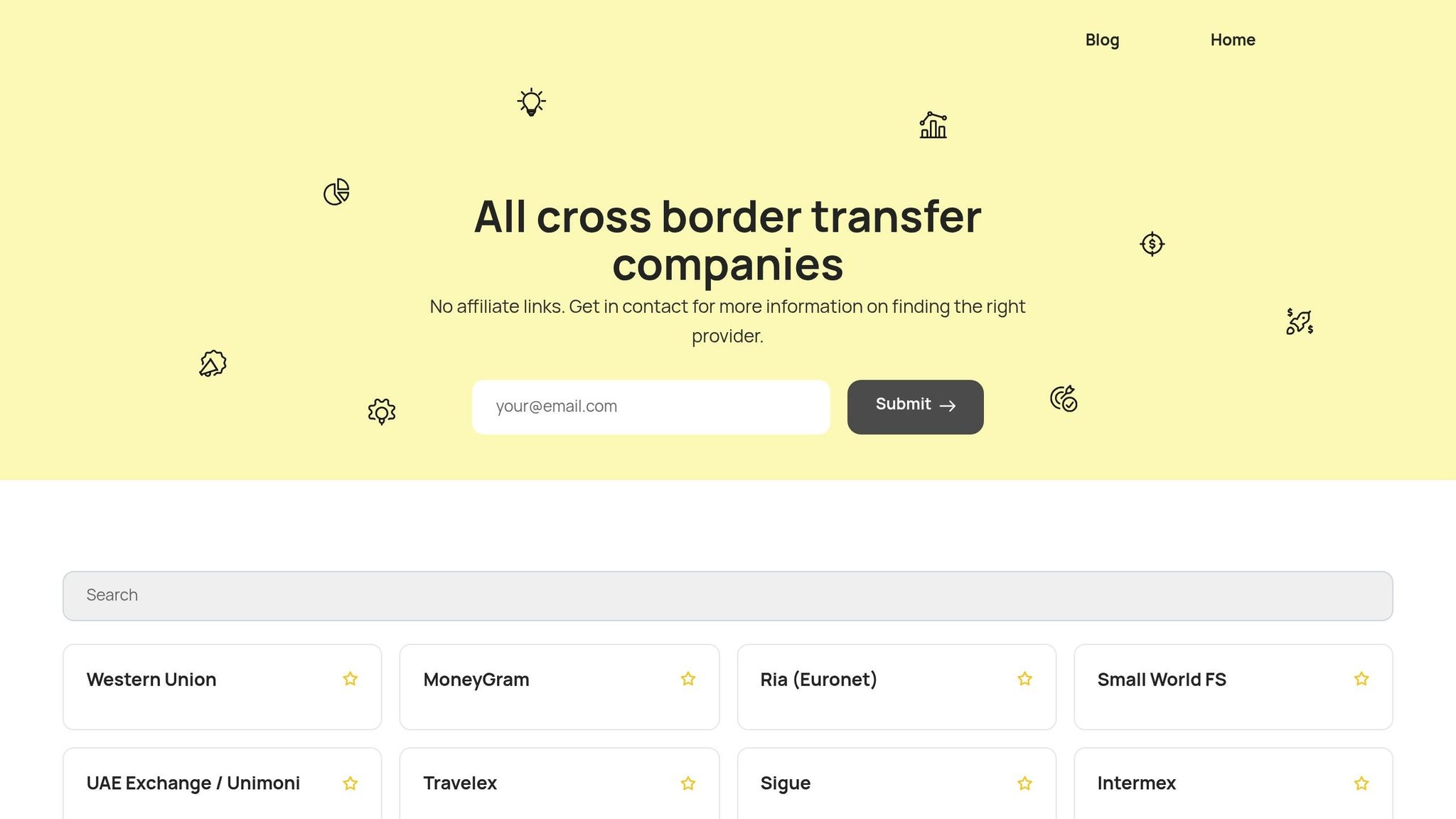When dealing with international transactions, U.S. businesses often face currency fluctuations that can impact profits. To manage this risk, forex hedging helps stabilize costs and maintain financial predictability. Here’s what you need to know:
- Forex Risks: Includes transaction risk (rate changes between payment dates) and economic risk (long-term currency impacts on cash flows).
- Hedging Tools:
- Forward Contracts: Lock in exchange rates for future payments.
- Options: Offer flexibility to secure rates while benefiting from favorable changes.
- Currency Swaps: Manage long-term exposures through cash flow exchanges.
- Implementation Tips:
- Calculate exposure by tracking invoices and payment schedules.
- Choose tools based on your needs - forward contracts for predictability, options for flexibility.
- Partner with payment providers offering integrated hedging solutions.
To succeed, monitor hedging performance, control costs, and align strategies with business needs. The right approach ensures stability in global transactions.
Master Forex Hedging: Beginner-Friendly Guide 📈 💲
Key Forex Hedging Tools
To tackle the challenges of currency fluctuations, U.S. businesses can rely on several hedging tools. Each method offers a unique way to manage international payment costs and protect against market volatility.
Forward Contracts
Forward contracts are one of the simplest ways to hedge against currency risk, especially for companies with consistent international payment schedules. These contracts allow businesses to lock in an exchange rate for a future date, ensuring predictable costs regardless of market changes.
How forward contracts work: A U.S. company agrees to exchange a specific amount of foreign currency at a fixed rate on a set future date. This eliminates uncertainty by shielding the business from unfavorable currency shifts, guaranteeing cost stability.
This tool is particularly helpful for businesses with regular payments to overseas suppliers or ongoing invoicing in foreign currencies. However, there’s a trade-off: if the market rate improves after the contract is signed, the company cannot take advantage of the better rate. The agreed-upon rate remains binding, whether favorable or not.
Forward contracts are best suited for businesses with predictable cash flows and clearly defined payment schedules.
Options and Futures
Currency options offer more flexibility than forward contracts. They provide the right - but not the obligation - to exchange currencies at a specific rate, combining protection with the possibility of benefiting from favorable market movements.
How currency options work: A U.S. company pays an upfront premium to secure the option to buy or sell foreign currency at a predetermined rate within a set timeframe. If the market rate improves, the company can simply let the option expire and use the better rate.
The standout advantage here is flexibility with protection. Options act as a safety net while allowing businesses to take advantage of favorable currency shifts. This makes them ideal for companies dealing with uncertain payment schedules or operating in volatile currency markets.
However, the upfront premium can be a drawback. The cost of the premium depends on factors like the currency pair and market conditions, and it’s non-refundable even if the option isn’t used.
Currency futures, on the other hand, function much like forward contracts but are traded on standardized exchanges. They offer greater liquidity and transparent pricing but lack the customization of forward contracts.
Options are particularly valuable for businesses that want to safeguard against unfavorable rates without giving up the potential to benefit from market improvements. They’re especially useful when payment timing is uncertain or when dealing with currencies prone to high volatility.
Currency Swaps
Currency swaps are a more intricate tool, often used by businesses with long-term international operations. These agreements involve exchanging cash flows in different currencies between two parties, making them a powerful option for managing extended exposure.
How currency swaps work: Two parties agree to exchange principal amounts in different currencies and later reverse the exchange at a predetermined rate and date. During the swap period, they may also exchange interest payments on the principal amounts.
Currency swaps are particularly effective for managing long-term exposure and can be tailored to meet specific business needs. They’re often used by companies with foreign subsidiaries, long-term contracts, or those financing operations in overseas markets.
Due to their complexity, currency swaps require close collaboration with financial institutions and advanced management capabilities. They’re best suited for larger companies with significant international exposure and the resources to handle these sophisticated instruments.
How to Implement Forex Hedging Strategies
Building on the hedging tools discussed earlier, here’s how to put those strategies into action and reduce currency risks effectively.
Calculate Your Currency Exposure
Before diving into hedging tools, it’s essential to figure out how much currency risk your business is actually dealing with. Start by reviewing a year’s worth of invoices, payment schedules, and contracts to identify recurring and future foreign currency exposures. Don’t forget to include indirect exposures, like loans or investments in foreign currencies, as they can also impact your business.
According to a PwC study, companies with strong FX risk management strategies tend to enjoy more stable earnings and higher market valuations.
To get a clearer picture, create a simple spreadsheet to track your currency exposure month by month. Include columns for the currency type, transaction amount, due date, and whether it’s an inflow or outflow. This will help you pinpoint when your business is most vulnerable to currency fluctuations and prioritize which transactions require hedging.
Next, assess your risk tolerance. Ask yourself: how much of a currency swing can your business handle without taking a big hit? For instance, if a 5% fluctuation would slash your profit margin by over 10%, it’s probably worth hedging that exposure. Once you have a detailed exposure profile, you’ll be in a better position to choose the right hedging tools.
Pick the Right Hedging Tool
The choice of hedging tool depends on your business needs, risk tolerance, and the timeframe of your exposure. The aim here isn’t to profit from currency movements - it’s to shield your business from adverse fluctuations.
"Hedging is analogous to taking out an insurance policy." - Investopedia
For short-term exposures (less than six months), forward contracts are often a good fit because they lock in exchange rates and provide certainty. Longer-term commitments might call for currency swaps, especially if you’re working with international partners on an ongoing basis.
Consider the tools discussed earlier - forward contracts, options, and swaps - and match them to your exposure profile. If your payments are regular and predictable, forward contracts are a practical choice since they offer cost certainty. On the other hand, if your payments are irregular or timing is uncertain, currency options might be a better fit. While options require an upfront premium, they provide flexibility.
Your approach should also reflect your risk tolerance. If your business values predictability above all else, forward contracts are a safe bet. For those willing to accept some level of uncertainty, options or a mix of instruments might work better. Many businesses find that combining multiple hedging tools creates a more balanced strategy.
Also, keep accounting requirements in mind. Some hedging instruments involve more complex rules and could affect your financial reporting. Make sure to understand these implications before committing.
Work with Payment Providers
Once you’ve selected your hedging tools, the next step is to integrate them into your payment processes. Partnering with a payment provider that offers robust hedging solutions can simplify this step.
Look for providers that offer integrated platforms where you can manage hedging contracts and execute payments in one place. This not only reduces complexity but also minimizes the chances of errors. Ensure that all hedging contracts are well-documented, specifying key details like currency amounts, exchange rates, settlement dates, and any conditions that could affect the agreement. Keeping thorough records is vital for both compliance and tracking purposes.
The Bank for International Settlements highlights how technological advancements have significantly improved FX risk management. When evaluating providers, prioritize those with strong monitoring and reporting capabilities. Real-time dashboards that display your exposure, active hedging contracts, and their overall impact can be incredibly valuable.
Finally, consult financial experts or advisors to navigate complex markets and ensure compliance with regulations. Establish clear communication protocols with your payment provider, so you know how to modify or cancel contracts if your business needs change. Also, clarify any fees associated with adjustments to avoid surprises down the road.
sbb-itb-165eed9
Choose the Right Cross-Border Payment Provider
Picking the right payment provider plays a huge role in managing forex risks. A good provider doesn’t just process transactions efficiently - it also supports your hedging strategy by offering transparent and cost-effective currency exchanges.
Key Features to Look For
When choosing a cross-border payment provider, focus on features that align with your hedging goals. Start with transparent fee structures. Hidden fees can throw off your calculations and weaken your hedging efforts. Look for providers that clearly spell out all costs, including transaction fees, conversion spreads, and any extra charges for hedging services.
Competitive exchange rates are another must. Even slight differences in rates can add up over time, especially if your business deals with large transaction volumes. Some providers offer rate guarantees or let you lock in favorable rates for future transactions, which can work hand-in-hand with your hedging strategy.
Settlement speed is also crucial. Faster settlements mean less exposure to currency fluctuations and more flexibility in timing your hedged transactions. Top providers often offer same-day or next-day settlements for major currencies, while others may take a few business days.
Integration capabilities can simplify your payment process. Seek out providers with strong APIs that integrate seamlessly with your existing accounting software, ERP systems, or treasury platforms. This reduces manual work and lowers the risk of errors in your hedging calculations.
Don't overlook regulatory compliance. Your provider should be licensed in relevant jurisdictions and adhere to strict compliance standards. This protects your business from regulatory issues and ensures all transactions meet legal requirements.
Finally, customer support quality can make or break your experience. When time-sensitive hedging decisions arise, having access to dedicated account managers or 24/7 support can help you act quickly and effectively in response to market changes.
Using Cross Border Payments Companies

This is where Cross Border Payments Companies can make a difference. Their curated directory offers detailed profiles of payment providers, showcasing both established financial institutions and fintech solutions with proven track records and regulatory compliance.
What sets this directory apart is its focus on provider strengths and weaknesses, helping you quickly identify the best fit for your hedging strategy. For instance, some providers excel in integration for automated hedging, while others specialize in specific currency corridors that might match your business needs.
The directory also highlights API availability, which is essential for automating hedging workflows. Providers with robust APIs allow you to integrate hedging tools directly into your payment systems, cutting down on manual tasks and speeding up execution.
Another standout feature is the coverage of global payment corridors, which helps you find providers with strong networks and competitive rates in your target markets.
With side-by-side comparisons, the directory makes it easier to evaluate providers based on the hedging features you need. It saves time and ensures you don’t miss critical details. Pay close attention to profiles that mention hedging capabilities, forward contract options, or specialized treasury services - these are signs of providers who truly understand forex risk management and can better support your strategies.
Track Hedging Performance and Best Practices
Once you've implemented a hedging strategy, the next step is to track its performance and manage costs effectively. Monitoring key metrics not only helps refine your approach but also ensures better cost control and stronger supplier relationships.
Monitor Hedging Results
To measure how well your hedging strategy is working, focus on a few key metrics. Start with the hedge ratio, which compares the portion of your currency exposure protected by hedging to your total exposure. This gives you a clear view of how much risk you're mitigating.
Conduct a cost–benefit analysis to weigh the expenses of your hedging tools against the potential financial losses they shield you from. Tracking these figures can help you assess whether the strategy is delivering value.
Keep a record of the exchange rates at both the initiation and settlement of your hedges. Over time, this can reveal patterns in timing that may improve your strategy.
Also, evaluate whether your hedging efforts are leading to more stable pricing with international suppliers. Lastly, compare your cash flow before and after implementing systematic hedging to identify improvements in managing currency-related costs.
Once you've assessed performance, turn your attention to minimizing the costs associated with hedging.
Control Hedging Costs
Reducing hedging costs starts with consolidating payments. Instead of hedging multiple small transactions separately, combine them into larger hedges on a monthly or quarterly basis. This approach often leads to better pricing and lower overall expenses.
Focus your hedging efforts on significant, recurring exposures. Hedging smaller or irregular payments may not justify the associated costs.
Another cost-effective approach is natural hedging. By matching income and expenses in the same currency, you can offset your exposure without relying heavily on financial instruments. For example, if you earn revenue and incur costs in euros, balancing them internally could reduce your need for additional hedging.
The duration of your hedging contracts also matters. Shorter-term contracts often strike a better balance between cost and protection, while longer-term ones can be pricier and more complex to manage.
Finally, review how often you hedge. Hedging too frequently can lead to unnecessary transaction costs, while delaying too long might mean missing favorable market conditions. Striking the right balance based on your transaction patterns is critical.
Best Practices for US Businesses
Once you've nailed down monitoring and cost control, these best practices can help you seamlessly integrate hedging into your operations.
- Align hedge maturity dates with payment schedules. This reduces the risk of mismatches and ensures that your hedges effectively cover your exposures.
- Use multi-currency accounts. Holding balances in the currencies you frequently transact in can act as a natural buffer and improve cash flow management.
- Automate hedging rules. Set up triggers that adjust your hedging levels based on significant market shifts or changes in your exposure. This removes emotion from decision-making and ensures consistency.
- Review your strategy regularly. Don’t wait for an annual review. Frequent evaluations ensure your strategy stays aligned with market conditions and your risk tolerance. Keeping detailed records of your decisions and outcomes can also help refine your approach and onboard new team members more effectively.
- Encourage cross-functional collaboration. When finance, procurement, and sales teams work together, everyone gains a better understanding of how currency risk is managed. This collaboration can lead to better negotiations with international suppliers and partners.
Key Points for Managing Forex Risk
Effectively managing forex risk is all about combining the right strategies, tools, and partnerships with consistent monitoring. This section brings together the core methods discussed earlier, offering a clear roadmap for protecting your business from currency fluctuations.
Summary of Hedging Tools and Strategies
When it comes to hedging, different tools serve different purposes:
- Forward contracts: These let you lock in exchange rates for future payments, providing predictability.
- Options: These give you the flexibility to secure an optional rate, which is especially useful if payment timelines are uncertain or if market conditions might shift in your favor.
- Currency swaps: Ideal for managing long-term exposures, these involve exchanging principal and interest payments in different currencies.
The key to success is aligning the right tool with your specific exposure and risk tolerance. A structured approach can help you stay on track: define your financial goals, pinpoint and analyze your forex exposures, develop a tailored hedging plan, and regularly review your strategy to ensure it’s working effectively.
For many businesses, natural hedging - matching revenues and expenses in the same currency - is the simplest and most cost-efficient approach. However, when this isn’t an option, financial instruments like those mentioned above can fill the gap.
Once you’ve chosen your tools, the next step is to strengthen your strategy by selecting the right payment provider.
Use Payment Providers Effectively
The payment provider you choose plays a big role in your hedging success. Look for providers that integrate hedging tools directly into their platforms, enabling you to execute both payments and hedges in one place. This setup minimizes settlement risks and simplifies your workflow.
Another must-have feature is multi-currency account capabilities. These accounts let you hold funds in multiple currencies, acting as a buffer against currency swings and giving you more control over when to convert funds.
For help finding the right provider, consider resources like Cross Border Payments Companies. Their directory allows you to compare providers based on factors like hedging options, API integration, and transaction corridors.
When evaluating providers, focus on those offering real-time rate transparency and competitive spreads. Hidden fees can eat into your hedging benefits, so cost clarity is essential.
Next Steps for US Businesses
For U.S. businesses, putting these strategies into action starts with a currency exposure assessment. Begin by documenting transaction details - amounts, currencies, and dates. This helps you identify and prioritize the exposures that need hedging the most.
Next, establish clear hedging policies. Define when and how you’ll hedge various exposures, including setting hedge ratios, choosing preferred instruments, and outlining decision-making authority.
Regular reviews are also crucial. Quarterly assessments work well for most businesses, providing an opportunity to measure your strategy’s performance and ensure it’s keeping risk within acceptable limits.
Finally, invest in systems and processes that make hedging easier. Whether through tools offered by your payment provider or dedicated treasury management software, having the right infrastructure ensures consistency and simplifies execution.
FAQs
How can a business choose the right forex hedging tool based on its needs and risk tolerance?
To pick the right forex hedging tool, businesses need to first assess their specific foreign exchange (FX) exposure and risk tolerance. This means taking a close look at the timing and volume of cross-border payments, potential currency swings, and how these factors might affect cash flow.
There are several tools to consider: forward contracts can lock in exchange rates, options offer greater flexibility, and swaps help manage ongoing exposure. The ideal choice depends on your business goals, budget, and how much certainty you need in your financial planning. Make sure to carefully compare the costs and advantages of each tool to see which fits best with your overall strategy.
What should businesses look for in a cross-border payment provider to support their forex hedging strategy?
When choosing a cross-border payment provider to align with your forex hedging strategy, it’s essential to weigh a few critical factors:
- Transparent Costs: Pick a provider that offers clear pricing with minimal fees. This includes low currency conversion rates and fewer intermediary charges, so you know exactly what you're paying for.
- Speedy Transactions: Timing is everything in forex hedging. A provider that guarantees fast and reliable transfers can help you avoid unnecessary delays.
- Forex Tools: Look for features like real-time exchange rate quotes and smooth integration with domestic payment systems. These can make managing your hedging strategy far more efficient.
- Security and Regulation: Always ensure the provider follows international compliance standards and uses strong security protocols to safeguard your funds and sensitive data.
Focusing on these elements can help businesses effectively manage currency risks while keeping international payments seamless.
What are the best ways for a company to track and evaluate its forex hedging strategy over time?
To keep a forex hedging strategy on track, businesses should routinely evaluate their currency exposure and gauge how well their hedges are working. This means looking at how effectively the strategy reduces risks during times of currency fluctuations and ensuring it aligns with broader financial objectives.
Leveraging tools like backtesting and advanced analytics can shed light on past performance and offer predictions for future scenarios. Regularly tracking key metrics - such as hedge positions, market movements, and exposure levels - allows for timely adjustments to keep the strategy on point. These periodic reviews not only sharpen decision-making but also help businesses stay ahead in managing forex risks.


